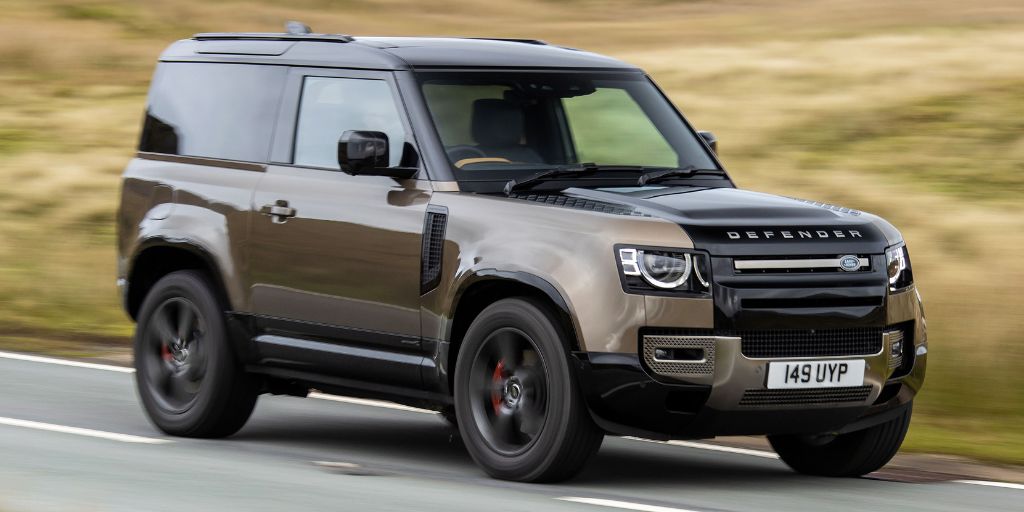In the vast and ever-evolving world of SUVs, few things are as romanticized — and often misunderstood — as off-road capability. Automakers have long capitalized on consumers’ fascination with ruggedness, adventure, and the spirit of exploration. Advertisements show vehicles fording rivers, climbing mountains, and conquering deserts.
Buzzwords like “trail-rated,” “rugged,” and “off-road ready” are plastered across marketing campaigns. But here’s the truth: not all SUVs are created equal, and certainly not all of them deserve to be called off-roaders. Many of today’s sport utility vehicles are built more for curb appeal and soccer practices than for rocky trails and remote wilderness.
Off-road capability is more than just a lifted stance and some plastic cladding. It’s a combination of structural engineering, drivetrain mechanics, and real-world durability. True off-road SUVs often feature body-on-frame construction, solid axles, low-range transfer cases, locking differentials, and durable underbody protection.
These are the kinds of components that don’t just look tough — they are tough. Vehicles built with this level of intentionality can navigate terrain that would leave most crossovers stranded, and they can do it repeatedly, often for hundreds of thousands of miles. They’re designed to be tools, not just fashion statements.
But because the SUV market is massively profitable, many automakers are inclined to design vehicles that look adventurous but are, in essence, glorified hatchbacks or sedans on stilts. These pretenders feature aggressive styling, oversized wheels, roof rails, and maybe even a faux skid plate — all the visual signifiers of a rugged off-roader — but without the hardware to match.
They’re often more focused on ride quality, infotainment features, and interior luxury than mechanical durability. For many consumers, this isn’t necessarily a bad thing. These vehicles serve perfectly well in urban and suburban environments, where aesthetics and comfort often trump trail capability. But it becomes a problem when these models are marketed as something they’re not — vehicles built to venture into the wild.
This disconnect between image and reality has created a confusing marketplace where even informed buyers can be misled. Some SUVs look every bit as capable as a Wrangler or Land Cruiser but would struggle on anything more rugged than a gravel road.
Others — often underrated and overlooked — possess the bones and pedigree of real trail machines, built for decades of abuse and trusted by overlanders, expedition crews, and even military forces. These are the SUVs you can count on when things get rough, not the ones that just look pretty parked at a trailhead.
In this article, we’ll take a deeper look at five SUVs that have earned their reputation as some of the most reliable and capable off-road vehicles on the planet, as well as five that are mostly style with little substance when it comes to actual off-road use.
We’ll explore what makes the reliable ones truly exceptional — from engineering choices to real-world durability — and dissect why the posers fail to deliver when put to the test. This is not just about badge loyalty or brand reputation; it’s about digging into the details, examining the mechanical realities, and separating genuine off-road credentials from well-designed marketing fluff.
Whether you’re an experienced off-roader looking for your next vehicle, a weekend warrior seeking adventure, or just someone intrigued by the difference between function and form, this guide will help you cut through the noise. We’ll go beyond aesthetics and advertising, and focus on what counts when it comes to off-road performance: reliability, drivetrain sophistication, articulation, ground clearance, and real-world track records.
The purpose here isn’t to shame vehicles that lack off-road capability — many of them are excellent for the purposes they’re designed for. Rather, this list is meant to highlight the critical difference between looking rugged and being rugged. Off-roading is not a casual task for a vehicle.
It requires strength, resilience, and a thoughtfully engineered system capable of enduring punishing conditions. So, whether you’re looking to climb mountains or simply want to know what your SUV is truly capable of, read on. Let’s separate the adventurers from the actors — the real-deal off-road warriors from the ones that are all show and no go.
Also Read: 5 Engine Swaps That Extend Life and 5 That End It
5 Reliable Off-Road SUVs
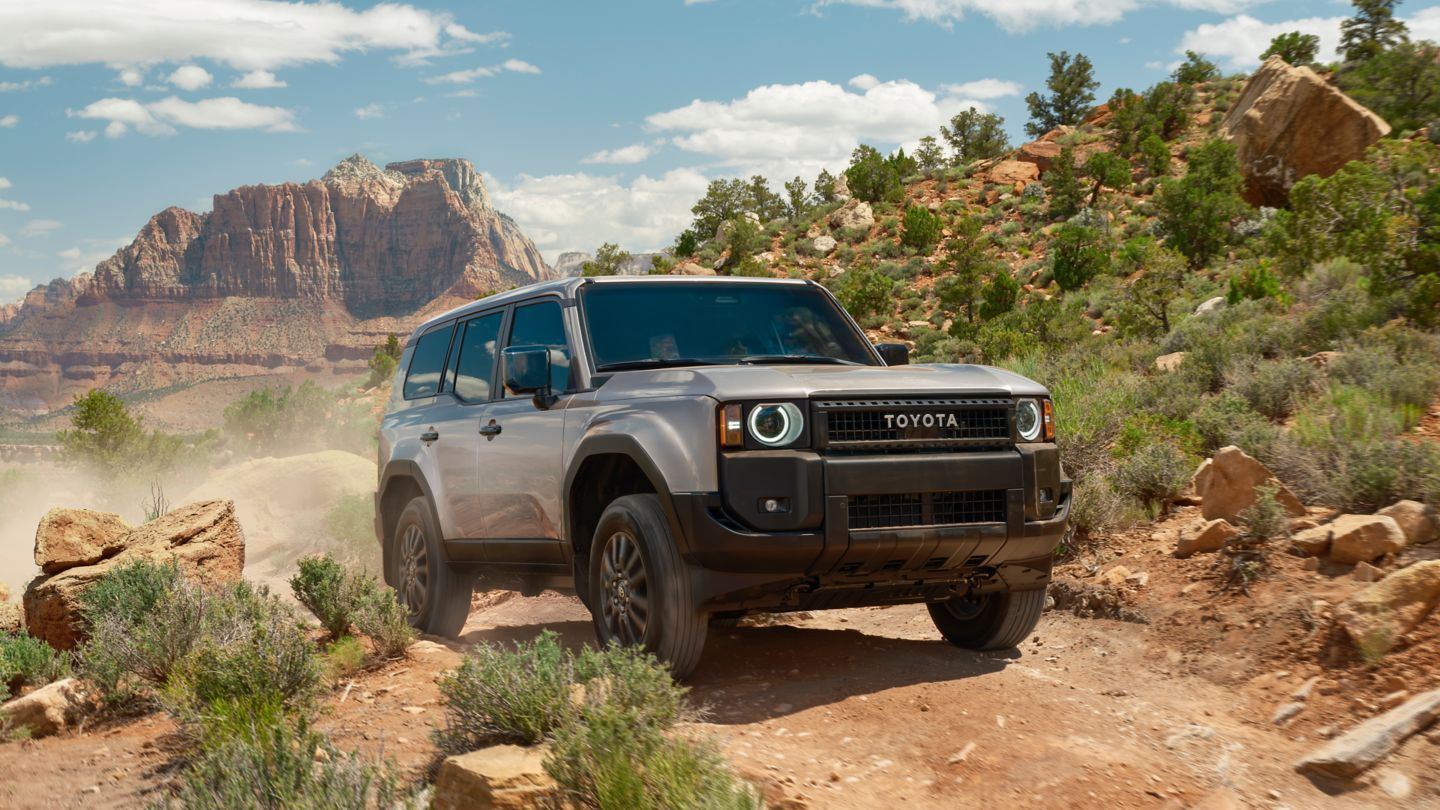
Reliable Off-Roader #1: Toyota Land Cruiser
The Toyota Land Cruiser is more than just a vehicle — it’s a global icon of rugged reliability and mechanical perseverance. Its origin story began with military applications in the 1950s, and ever since, it has proven its worth in some of the world’s most hostile environments.
Over the decades, the Land Cruiser has become the go-to vehicle for humanitarian missions, desert expeditions, and long-distance overland travel. The SUV’s design philosophy centers around durability and simplicity, with engineers favoring tried-and-true technologies over trend-driven features. This strategy has paid off; Land Cruisers are still running strong after hundreds of thousands of miles, often in places where spare parts are scarce and mechanics are few and far between.
A key component of the Land Cruiser’s off-road credibility is its use of body-on-frame construction, a foundation that offers greater resistance to twisting forces encountered during rock crawling, hill climbing, and navigating uneven terrain. Most models also feature robust suspension systems — typically a combination of independent front and solid rear axles, though some generations lean into full solid-axle setups for maximum durability.
In addition, Toyota equips the Land Cruiser with sophisticated full-time four-wheel-drive systems, low-range gearboxes, crawl control, and locking differentials. This isn’t just about numbers on a spec sheet — these features are meticulously tuned for real-world usability, making them effective even in the hands of less experienced drivers.
Beyond its technical specs, the Land Cruiser wins hearts and minds with its unparalleled long-term reliability. The engines — whether naturally aspirated inline-sixes, V8s, or the more recent turbocharged V6s — are engineered for longevity rather than maximum horsepower. Maintenance access is intentionally simple, and the vehicle’s electronics are typically minimal compared to more tech-heavy rivals. For international travelers, this simplicity is essential.
In many cases, Land Cruisers are used as mobile lifelines, expected to carry passengers and cargo safely across hundreds of miles without access to fuel stations, service centers, or modern road infrastructure. When a vehicle is considered reliable enough to serve the United Nations and border patrols in remote regions, it’s clear that it’s not just built for show.
That said, the Land Cruiser does come with a high price tag — particularly in Western markets — and some critics point to its relatively tame exterior styling or dated infotainment as drawbacks. But these critiques are missing the point. The Land Cruiser is not, and never has been, about flash. It’s about function. Its reputation isn’t built on marketing or looks, but on performance, resilience, and consistency.
Few SUVs can claim to have such a universally trusted name in extreme terrain, and even fewer can back it up with generations of proven reliability. The Toyota Land Cruiser remains one of the most dependable off-road SUVs ever created, earning its position as a legend in the off-road world.
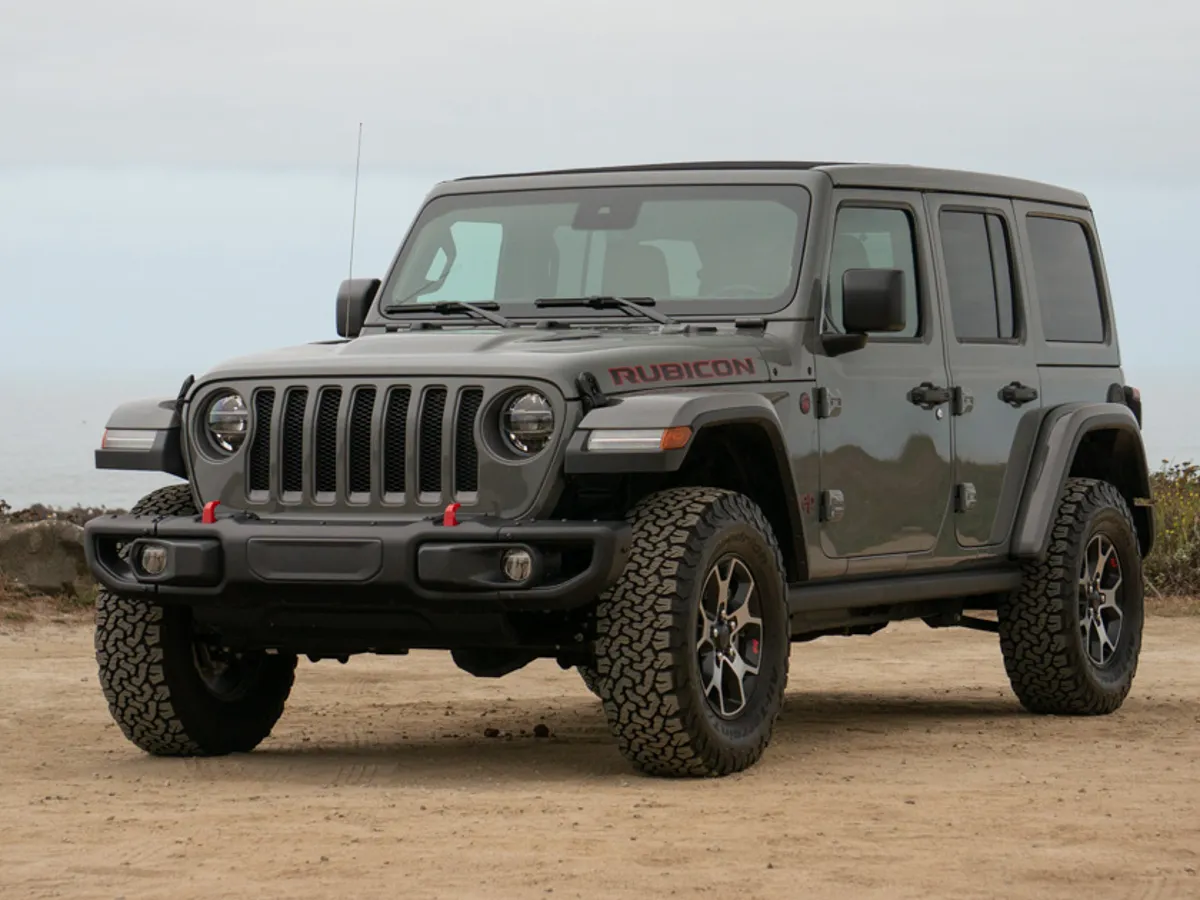
Reliable Off-Roader #2: Jeep Wrangler Rubicon
Few vehicles can claim the level of cultural and off-road significance that the Jeep Wrangler Rubicon holds. Born from the DNA of the original military Jeep used in World War II, the modern Wrangler still embodies the spirit of rugged freedom. The Rubicon trim, specifically, takes that essence and dials it up for maximum off-road capability.
Jeep didn’t just slap a badge on a trim level — they engineered the Rubicon to be a true trail conqueror, and it stands as the most hardcore off-road variant in the Wrangler lineup. For enthusiasts and serious adventurers alike, the Rubicon offers one of the most capable factory-built off-road platforms available today.
Underneath its iconic boxy exterior lies a suite of hardware that’s custom-tailored for serious trail duty. The Wrangler Rubicon comes standard with Dana 44 axles front and rear — widely respected in off-roading circles for their strength and upgrade potential. It also includes front and rear locking differentials, an electronic sway bar disconnect for improved wheel articulation, and a low-range 4:1 transfer case ratio that allows for superior torque multiplication in crawling situations.
Its 33-inch all-terrain tires (with optional 35s) and impressive approach, breakover, and departure angles are purpose-built for rock gardens and muddy hill climbs alike. Unlike many SUVs that hide their capabilities behind slick body panels, the Rubicon’s features are built into its bones.
One of the most overlooked advantages of the Rubicon is its simplicity and modularity. Jeep has made a conscious effort to keep the Wrangler accessible to those who like to tinker, modify, and personalize their rides. Nearly every aspect of the Wrangler can be removed, replaced, or upgraded — from bumpers and doors to suspension components and gearing.
The aftermarket support for the Wrangler is second to none, with an entire cottage industry built around mods, upgrades, and trail-ready add-ons. Whether you’re preparing for the Rubicon Trail, Moab, or the backwoods of Appalachia, the Wrangler Rubicon can be tailored to fit your off-road ambitions — and it has the capability to match.
On-road, the Rubicon can feel crude compared to crossovers and luxury SUVs. Wind noise, ride comfort, and handling are all compromises. But that’s because it hasn’t diluted its purpose. The Rubicon is not for everyone — and it doesn’t try to be. It’s a tool designed for a specific job, and it excels at it better than nearly any other production SUV.
Jeep has preserved what makes the Wrangler Rubicon special: authenticity, capability, and an unwavering commitment to off-road excellence. That’s why it’s not just reliable — it’s respected.
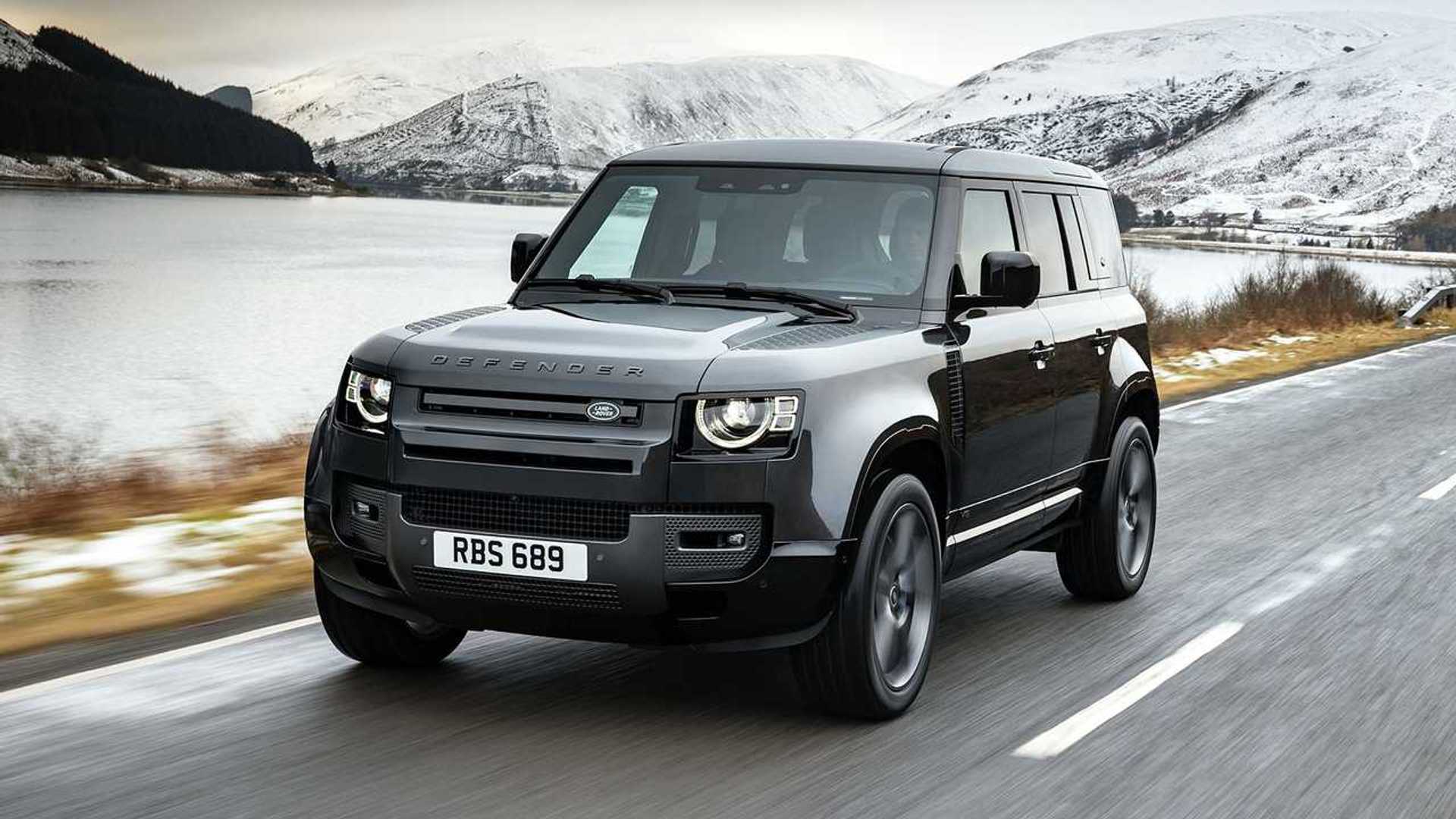
Reliable Off-Roader #3: Land Rover Defender (2020-Present)
The rebirth of the Land Rover Defender in 2020 sparked immediate debate among enthusiasts, many of whom were fiercely loyal to the utilitarian charm of the original. But despite its more refined appearance and modern appointments, the new Defender is no soft crossover in disguise — it is a seriously capable off-roader that blends advanced technology with time-tested fundamentals.
The Defender retains the core philosophy of being a go-anywhere vehicle, yet adds a level of comfort and innovation rarely seen in the segment. In short, it respects its heritage while embracing the future.
The new Defender utilizes a unibody platform — a choice that initially caused concern among off-road purists — but it’s not a weakness. In fact, the new platform is incredibly stiff and designed to handle serious punishment. Paired with an available adjustable air suspension system, the Defender offers impressive ground clearance and customizable ride height for different off-road scenarios.
Advanced tech such as Land Rover’s Terrain Response 2 system, which automatically selects optimal settings based on the terrain, and a two-speed transfer case with center and rear locking differentials, gives the Defender high levels of competence on all kinds of surfaces, from rocky slopes to icy roads.
Where the Defender truly distinguishes itself is in the balance it strikes between capability and comfort. Many traditional off-road vehicles require sacrifices in on-road driving quality or cabin refinement. The Defender, on the other hand, offers a serene and composed ride, plush seating, and high-end materials without compromising its rugged DNA.
This makes it not just a weekend warrior, but a legitimate daily driver. Families, adventurers, and even overlanders have all found common ground with the Defender, appreciating its dual personality as a stylish urban SUV and a formidable trail machine.
Perhaps most impressively, the Defender addresses many of the historical reliability concerns that plagued older Land Rover models. New quality control standards, improved drivetrains, and a simpler, more modular electronics architecture all contribute to better dependability.
Early ownership reports have been largely positive, and while it’s not yet a decades-tested icon like the Land Cruiser, it’s quickly building credibility. With its forward-looking engineering, genuine trail ability, and newly earned reputation for sturdiness, the new Defender has solidified its place as a reliable off-road contender in the modern SUV landscape.
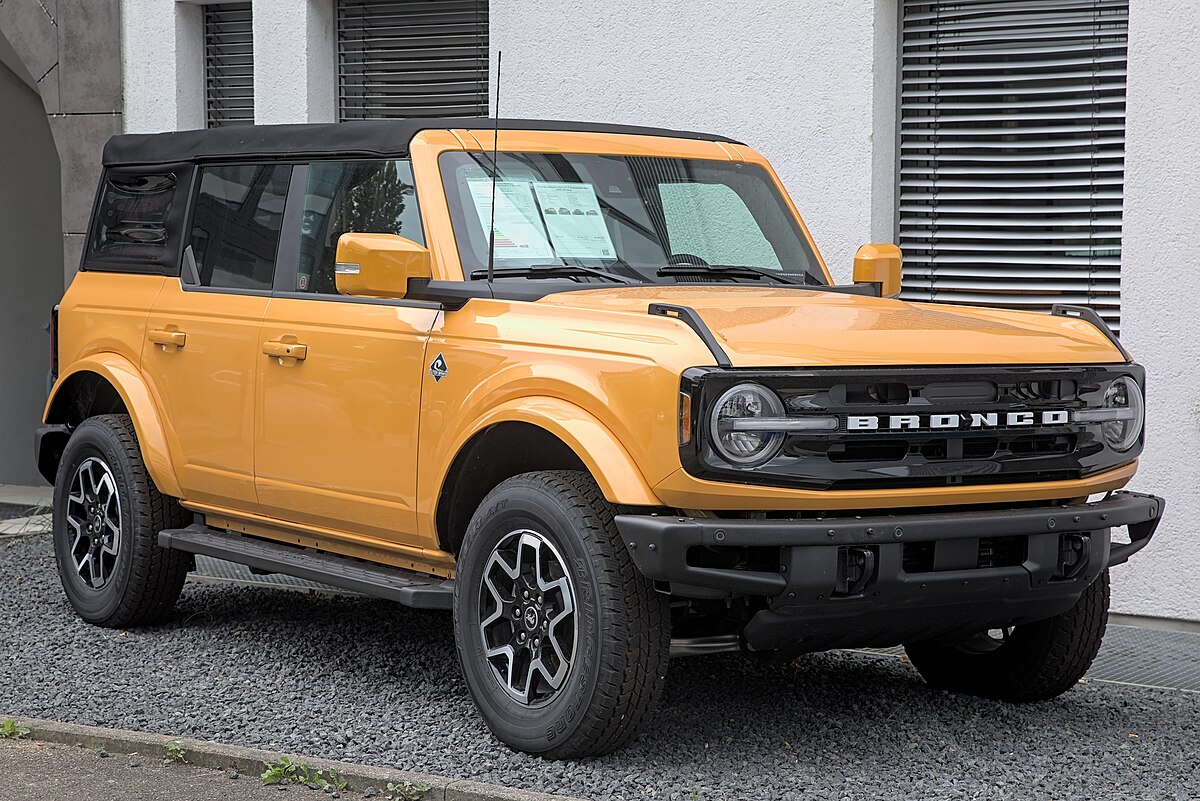
Reliable Off-Roader #4: Ford Bronco (2021–Present)
The Ford Bronco’s return in 2021 wasn’t just another retro revival — it was a full-scale assault on the off-road SUV segment, aimed directly at the Jeep Wrangler’s long-held dominance. Ford didn’t take the task lightly.
The development process involved years of R&D, a dedicated engineering team, and countless hours of real-world testing across the most demanding terrain in North America. The result is a purpose-built off-roader that genuinely delivers on its promises. From design to drivetrain, the modern Bronco isn’t just wearing hiking boots — it’s stomping trails with confidence.
At the heart of the Bronco’s capability is its flexible modular platform and impressive mechanical options. Buyers can choose between two turbocharged engines — a 2.3L inline-four or a 2.7L V6 — both delivering ample torque for off-road crawling. However, the real magic lies in its chassis and suspension. The Bronco features independent front suspension (IFS), which may sound less “serious” to purists, but Ford has tuned it brilliantly to offer control, comfort, and durability.
Paired with available Bilstein dampers, steel bash plates, and locking front and rear differentials, the Bronco isn’t playing catch-up to Jeep — it’s pushing the category forward. The optional “Sasquatch Package” adds 35-inch mud-terrain tires, beadlock-capable wheels, and higher fender flares, making it trail-ready right out of the box.
Ford also innovated with technology. The Bronco’s G.O.A.T. (Goes Over Any Terrain) Modes allow the driver to cycle through terrain-specific calibrations, adjusting everything from throttle mapping to traction control, diff locks, and even steering weight. Trail Turn Assist, which brakes the inside rear wheel to help the SUV pivot around tight corners, is another clever tool in its arsenal.
The tech doesn’t replace driver skill but enhances it, giving beginners a sense of confidence and experienced drivers more tools to fine-tune their approach. Combined with a removable roof and doors, high water fording capability, and impressive approach and departure angles, the Bronco shows no sign of compromise in the wild.
Reliability has also been a strong point for the Bronco, especially considering it’s a new model. Early concerns about the removable roof panels were addressed swiftly, and Ford has shown responsiveness to real-world user feedback. Unlike many new SUVs that debut with flash and stumble with durability, the Bronco has been performing admirably in long-term tests and owner experiences.
It’s durable, robust, and intelligently designed for real off-road use — not just as a lifestyle accessory. While it still has ground to cover to reach Land Cruiser or Wrangler-level legacy, the modern Bronco has firmly established itself as a serious, dependable contender in the world of off-road SUVs.
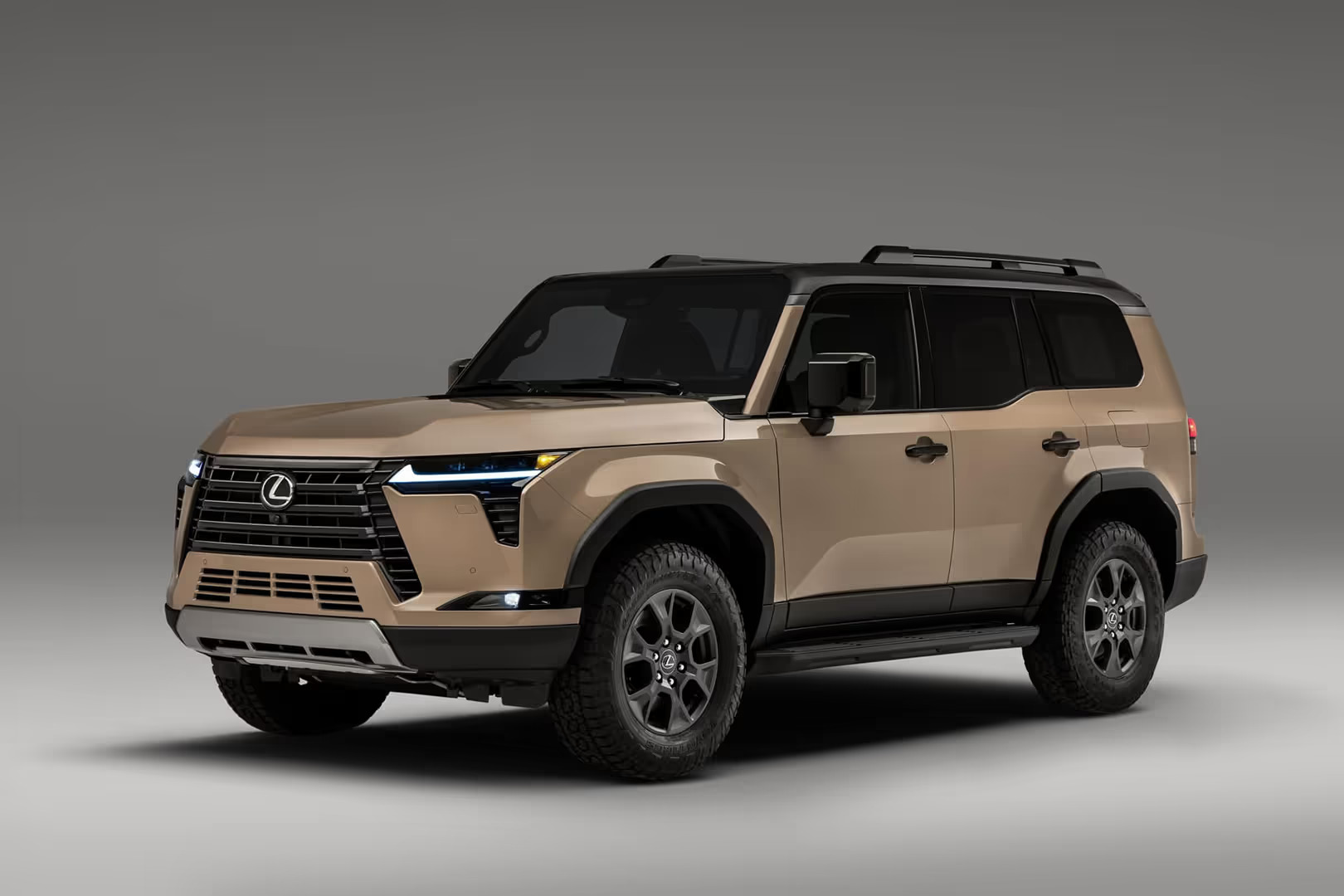
Reliable Off-Roader #5: Lexus GX (Especially GX460)
The Lexus GX might not be the first name that comes to mind when you think of off-road dominance — after all, it’s wrapped in luxury leather, wears a Lexus badge, and is more likely to be found in suburbia than on the Rubicon Trail.
But underneath its polished, luxury-suited skin lies one of the most underappreciated, trail-capable platforms available on the market. Based on the same robust underpinnings as the Toyota Land Cruiser Prado (a staple in many international markets), the Lexus GX is a wolf in sheep’s clothing — calm on the road, but shockingly capable when the pavement ends.
The GX460, in particular, offers a body-on-frame construction, a full-time four-wheel-drive system, a low-range transfer case, and a proven 4.6-liter V8 engine known for longevity and torque. The SUV also features available KDSS (Kinetic Dynamic Suspension System), which automatically disconnects the sway bars during off-road use, increasing wheel articulation without compromising on-road handling.
Its ground clearance, while not the highest in the segment, is ample, and the approach and departure angles are decent enough to tackle trails, hills, and rocky terrain without major modifications. With simple additions like all-terrain tires and skid plates, the GX460 becomes a legitimate trail-ready vehicle.
What makes the GX so compelling is its dual-purpose nature. On-road, it’s whisper quiet, effortlessly smooth, and lined with high-end materials. On the trail, it transforms into a resilient and surprisingly agile machine, thanks to its mechanical layout and well-engineered suspension geometry.
Unlike many luxury SUVs that prioritize tech over toughness, the GX leans on Toyota’s legacy of overengineering — the kind that results in vehicles lasting decades with minimal trouble. Its V8 is naturally aspirated, meaning fewer moving parts and a more predictable power curve — a big advantage when you’re climbing loose dirt hills or descending rocky ravines.
The GX also earns its place on this list because of its long-term reliability record. Year after year, it ranks at the top of quality surveys and owner satisfaction reports. While some might argue it’s due for a full redesign (and one is on the way), the current GX continues to command respect from off-road enthusiasts who recognize it as a luxurious sleeper with serious trail credentials.
It may not market itself as an adventure vehicle, but in practice, it is one. The GX proves that ruggedness doesn’t have to come at the expense of refinement — and that true reliability can wear a designer badge without losing any off-road muscle.
5 That Are All Show and No Go
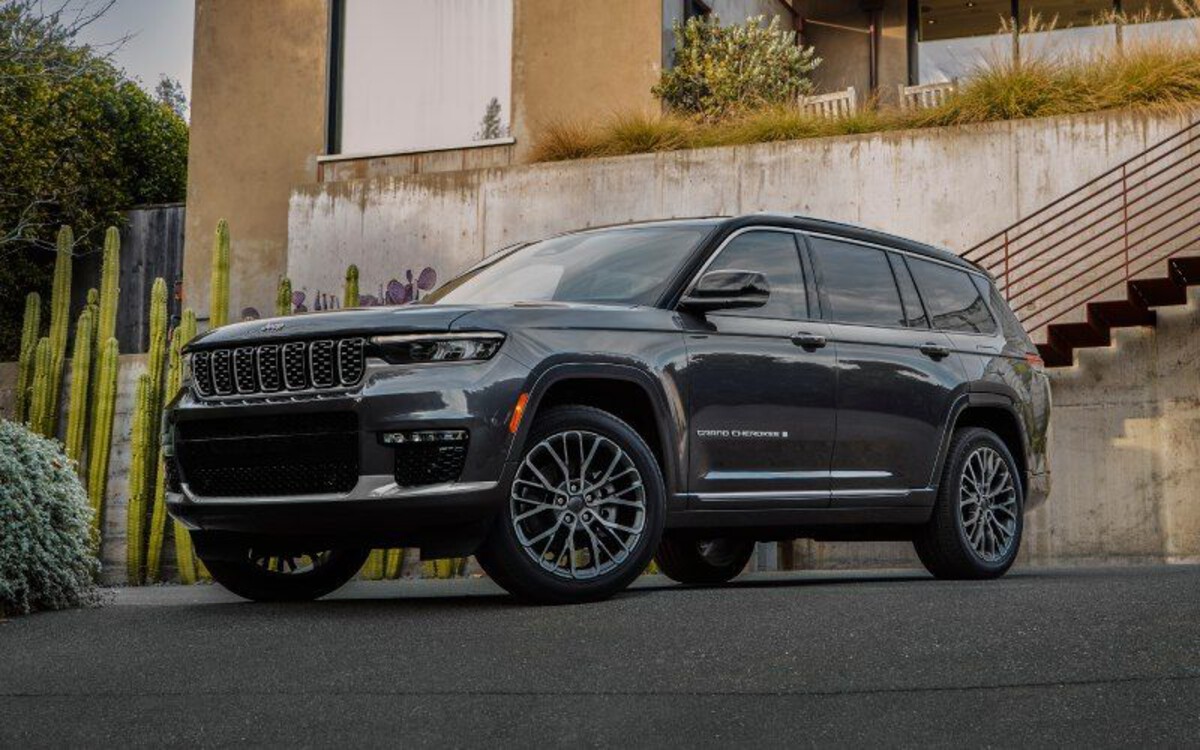
Pretender #1: Jeep Grand Cherokee L
At first glance, the Jeep Grand Cherokee L seems like a natural off-road performer. It carries the Jeep badge — a name synonymous with rugged trails and wilderness adventures — and it sports a commanding stance with optional off-road appearance packages, chunky tires, and chrome accents that suggest capability.
The L variant even stretches the original Grand Cherokee’s platform to accommodate a third row, giving it an even more imposing road presence. However, once you strip away the marketing and take a hard look at the engineering, it becomes clear that the Grand Cherokee L is more of a family-hauler with an adventurous costume than a true off-roader.
For starters, the Grand Cherokee L trades the time-tested solid front axle found in Wrangler and other hard-core off-roaders for an independent front suspension that prioritizes comfort over durability and articulation. While this design choice improves ride quality on paved roads — a welcome feature for school runs and road trips — it limits the vehicle’s ability to flex over uneven terrain or absorb heavy impacts from rocks or ditches.
The vehicle’s approach and departure angles, critical for trail performance, are mediocre at best, particularly on trims that feature side steps or low-hanging bumpers. Even with the optional air suspension system, which can raise ride height slightly, the Grand Cherokee L lacks the raw geometry needed for real trail use.
What’s more, the drivetrains offered don’t inspire confidence for demanding off-road use. Most Grand Cherokee L models are equipped with full-time all-wheel drive systems rather than true 4WD with locking differentials and low-range gearing. The more capable Quadra-Trac II system is only available on higher trims and doesn’t hold a candle to what’s found in the Wrangler Rubicon or even the older Grand Cherokee Trailhawk trims.
Worse still, the Grand Cherokee L prioritizes tech-heavy features like touchscreen controls, adaptive cruise, and interior luxury, rather than the robustness and mechanical simplicity favored by serious off-roaders. While it excels in comfort, its ability to survive serious punishment on a trail is questionable.
The Grand Cherokee L is not a bad SUV — far from it. It’s a well-made, attractive, and comfortable family vehicle that excels on pavement and light gravel roads. But when Jeep slaps an off-road label on this model, it feels like more of a marketing maneuver than an engineering one. It’s designed to look like a go-anywhere SUV, and for many buyers, that’s good enough.
But for those seeking real trail capability, this Jeep doesn’t belong in the same league as its rugged siblings. The badge may say “Trail Rated,” but the hardware underneath doesn’t back that up in a meaningful way.
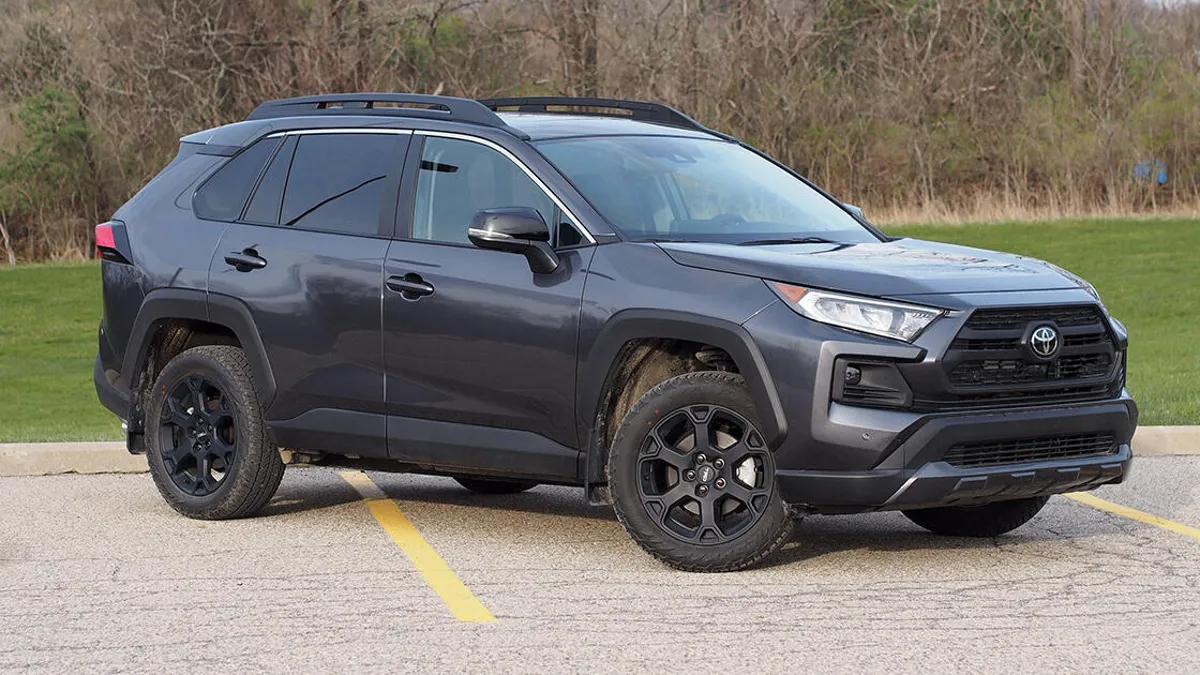
Pretender #2: Toyota RAV4 TRD Off-Road
The Toyota RAV4 has long been one of the best-selling compact SUVs in the world, known for its dependability, fuel economy, and ease of ownership. But with the growing appetite for adventurous-looking vehicles, Toyota decided to give its popular RAV4 a rugged makeover in the form of the TRD Off-Road trim.
On paper, it seems promising — it has more aggressive tires, unique badging, black plastic cladding, and a sportier stance. Unfortunately, the off-road enhancements are largely skin-deep. Despite the visual drama, the RAV4 TRD Off-Road lacks the mechanical ingredients needed to tackle serious terrain.
Mechanically, the RAV4 TRD Off-Road is nearly identical to its more road-oriented siblings. It rides on the same unibody platform, has limited ground clearance, and uses a basic all-wheel-drive system rather than a true four-wheel-drive setup. There’s no low-range gearing, no locking differentials, and no way to disconnect sway bars.
While Toyota does include a traction management system that simulates off-road modes (mud, sand, snow, etc.), these are mostly electronic tweaks that can’t make up for the lack of real off-road hardware. The off-road tires do add some grip, but they’re mounted on relatively small wheels with minimal sidewall — a setup that’s more suited to pothole-laden city streets than rocky trails.
More importantly, the RAV4’s off-road marketing leans heavily on aesthetics. The “TRD” badge — a name previously reserved for performance-oriented or rugged vehicles like the Tacoma TRD Pro — has lost some of its meaning here. The shocks are retuned, and the suspension is slightly beefed up, but it still bottoms out quickly when confronted with aggressive terrain.
Trail performance is limited not just by clearance, but also by poor approach and departure angles and a lack of real-time chassis adaptability. What this means in practice is that the RAV4 TRD Off-Road is largely uncomfortable and ill-prepared when venturing beyond dirt roads or maintained trails.
In short, the RAV4 TRD Off-Road is an SUV for buyers who want the look of adventure without the risk of adventure. It’s perfect for weekend trips to the lake, light camping, or navigating snowy suburban streets, but it simply doesn’t have the chops to handle remote or punishing environments.
There’s nothing wrong with that — not everyone needs a rock crawler. But for Toyota to position this model as an off-road performer feels like a stretch. In this case, the TRD badge functions more like a costume than a badge of engineering excellence.
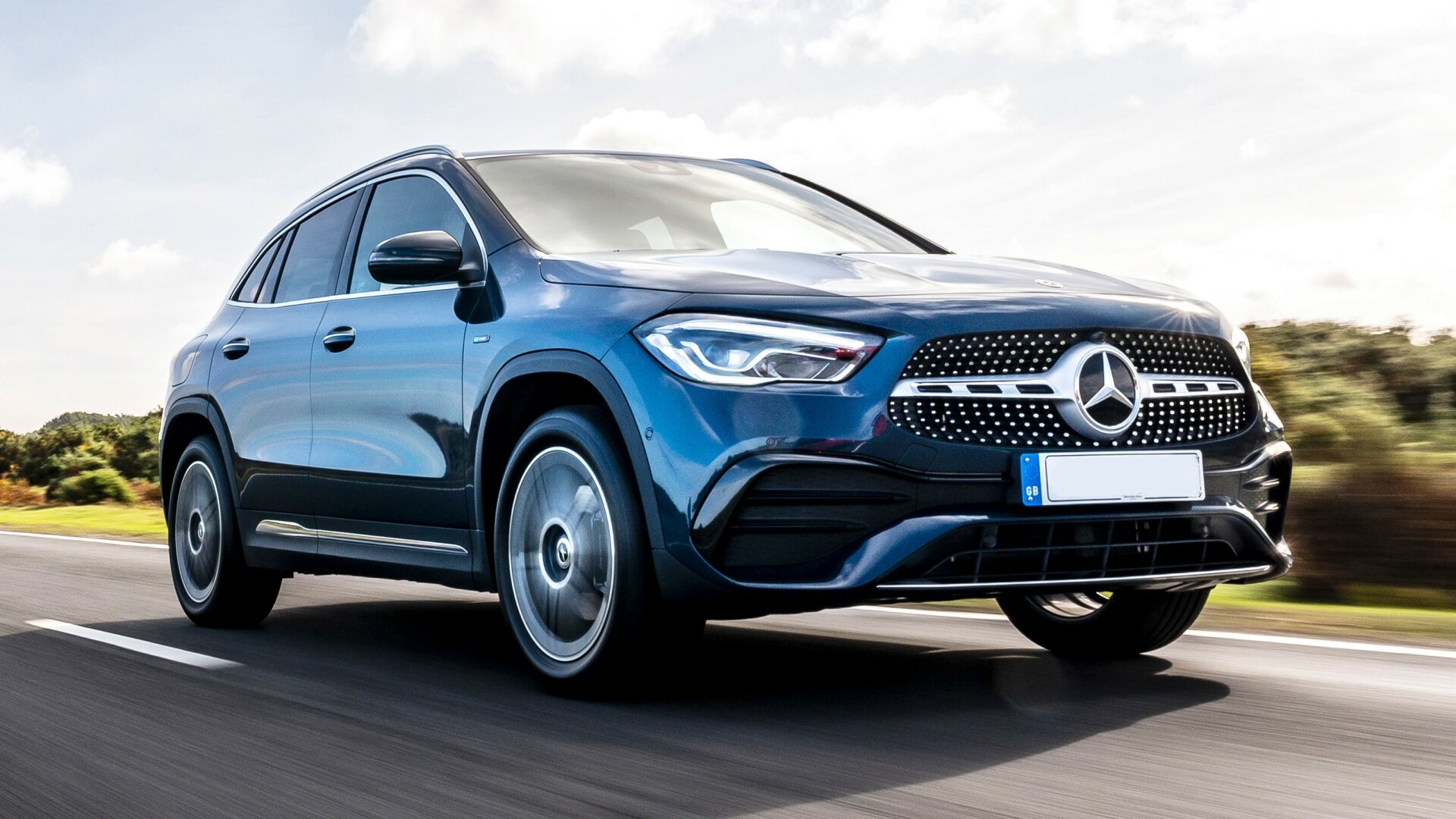
Pretender #3: Mercedes-Benz GLA 250 4MATIC
The Mercedes-Benz GLA 250 4MATIC is a small luxury crossover that leans heavily into sporty aesthetics and premium comfort. It’s part of Mercedes’ strategy to capitalize on the growing demand for compact SUVs with upscale branding. With its elevated ride height, all-wheel-drive system, and muscular lines, the GLA 250 may appear ready to venture into the great outdoors. But make no mistake — this SUV is engineered almost exclusively for urban driving and paved roads. Any semblance of off-road prowess is more illusion than reality.
The first and most obvious limitation is its platform. The GLA 250 is built on a car-based unibody architecture shared with the A-Class, meaning it behaves more like a tall hatchback than a rugged SUV. There’s no body-on-frame construction, no skid plates, no locking differentials, and certainly no low-range gearing.
Even though Mercedes markets the 4MATIC all-wheel-drive system as capable of dealing with a variety of road surfaces, it’s largely reactive rather than proactive, redistributing power only after slippage is detected. This is fine for wet or icy roads, but wholly inadequate when navigating rocks, steep inclines, or soft sand.
The suspension is tuned for handling, not articulation. The GLA features relatively low ground clearance for its class, and its underbody lacks the kind of protection required for trail driving. The ride quality is comfortable on pavement, but the moment it encounters rutted roads or off-camber terrain, it becomes unsettled.
Unlike competitors that at least offer some semblance of trail customization — such as drive modes or terrain selection systems — the GLA 250 offers none of that. Its capabilities are limited to occasional gravel roads, and even those should be approached with caution if the road becomes steep or uneven.
Ultimately, the GLA 250 is a stylish, nimble, and efficient crossover that serves its purpose in urban environments extremely well. It offers the prestige of the Mercedes-Benz badge and the comfort of a luxury vehicle. But it shouldn’t be mistaken for an off-roader, no matter how aggressive its marketing might be.
The SUV’s form-over-function design is emblematic of many vehicles in this category: pretty on the outside, but not engineered to survive — let alone thrive — off the pavement. For true off-road capability, the GLA 250 is simply not in the conversation.
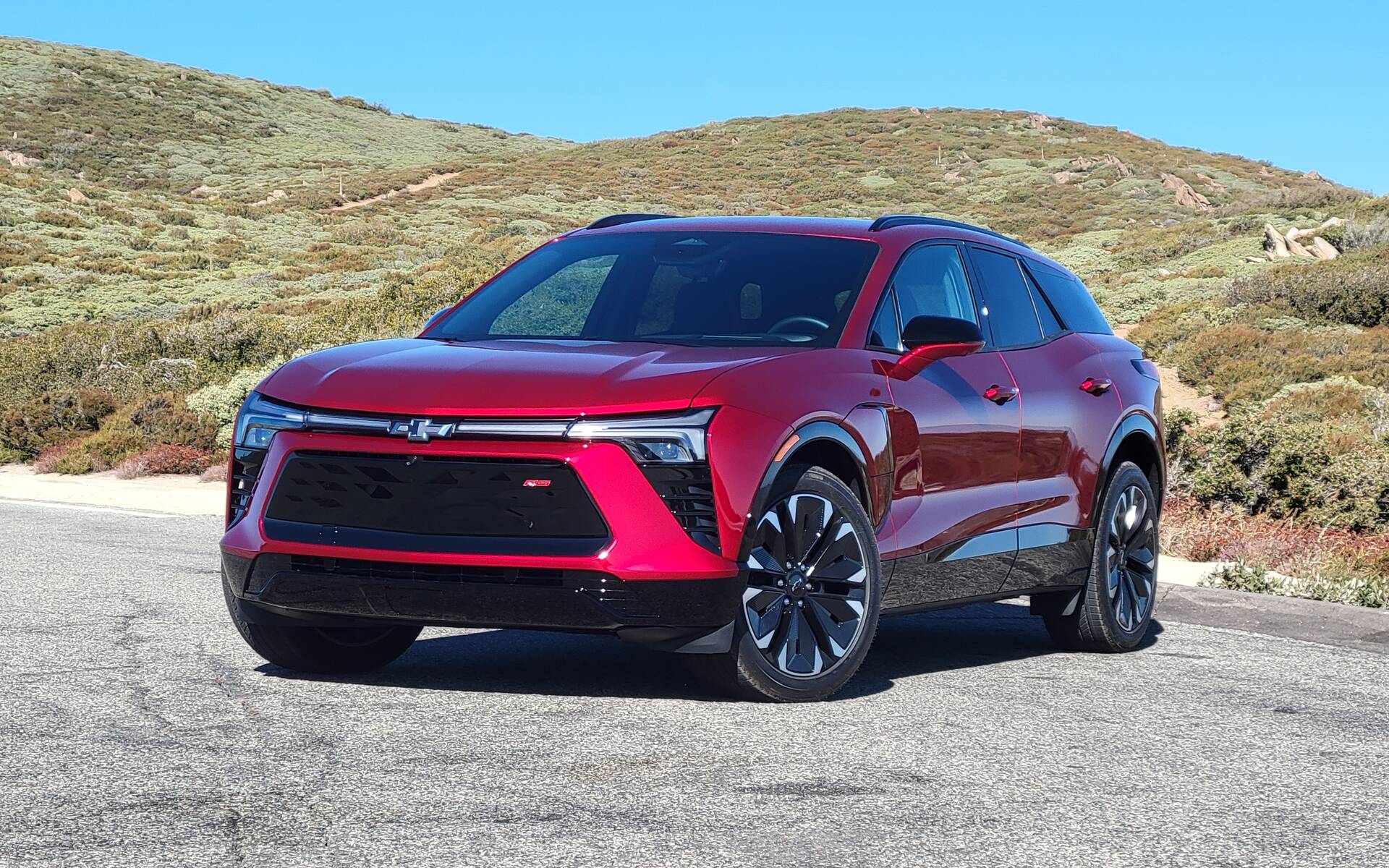
Pretender #4: Chevrolet Blazer RS
The resurrection of the Chevrolet Blazer nameplate stirred a lot of emotions among enthusiasts, and not all of them were positive. Older Blazers, particularly those built on truck-based platforms, had earned their stripes as rugged and reliable 4x4s. When Chevrolet reintroduced the Blazer in its new form, many expected at least some continuation of that legacy.
Instead, what they got was a crossover that shared more DNA with the Chevy Equinox than with any off-road legend. The RS trim, in particular, with its blacked-out grille, oversized wheels, and aggressive stance, screams performance — but it’s a textbook case of style over substance.
The Blazer RS is powered by a respectable V6 engine paired with an all-wheel-drive system that enhances road handling, particularly in slippery conditions. But the AWD system lacks the off-road-focused hardware found in true 4x4s — there’s no low-range gear, no locking differentials, and no serious off-road software suite.
Ground clearance is modest, and the vehicle’s long wheelbase and street-tuned suspension severely limit articulation and obstacle clearance. Despite the SUV’s muscular appearance, it’s really only suited to light-duty trails or poorly maintained roads, not technical off-road conditions.
Even more telling is how the RS prioritizes aesthetics. With massive 20- or 21-inch wheels, low-profile tires, and a performance-tuned suspension, it’s designed for sporty driving, not rock crawling. These wheel setups are particularly vulnerable off-road, increasing the risk of tire and wheel damage on uneven terrain.
The Blazer RS is meant to evoke the aggressive, adventurous spirit of off-road vehicles while staying firmly rooted in the asphalt world. That’s not necessarily a bad thing — but it’s misleading for anyone expecting real off-road grit from the nameplate.
To be clear, the Blazer RS is a well-designed vehicle, for what it is. It drives well, offers a stylish and comfortable interior, and can handle inclement weather just fine. But it does not — and likely never will — embody the ruggedness of its ancestors.
Chevy’s choice to leverage the Blazer’s heritage without matching its performance has left some buyers disappointed. It’s a stylish pose in a world where real capability still matters, and while it may look the part in a commercial, it simply doesn’t have the bones for trail life.

Pretender #5: Infiniti QX80
The Infiniti QX80 is a full-size luxury SUV with a massive road presence, a luxurious cabin, and impressive towing capacity. With its elevated ride height, wide stance, and brawny V8 engine, it gives off the impression of an off-road brute. And indeed, its sheer size and power suggest a vehicle that could handle itself on rough terrain. But beneath the intimidating appearance lies a vehicle that is designed almost entirely for on-road use. Despite optional four-wheel-drive systems and large dimensions, the QX80 is far from being a legitimate off-road machine.
The QX80 uses an older platform derived from the Nissan Patrol — a vehicle that is quite capable off-road — but Infiniti’s version is softened considerably for the luxury market. Its suspension has been tuned for comfort, which translates to body roll and limited articulation off-road.
The electronic four-wheel-drive system is reactive and lacks the kind of trail-focused features that its cousin, the Patrol, includes in other global markets. Most importantly, the QX80’s massive size makes it unwieldy in tight trail conditions. Despite its elevated ride, the breakover and departure angles are quite poor, leading to frequent scraping or bottoming out on anything more than a mild dirt road.
Another issue is that luxury priorities have overridden rugged practicality. The QX80’s plush interior, while beautiful, is filled with soft-touch materials and tech that aren’t designed to withstand dirt, water, or rough impacts. There’s no underbody armor, no trail camera system, and limited real-world evidence of off-road durability.
Infiniti doesn’t position the QX80 as a trail machine in the same way that Land Rover does with the Defender or Lexus does with the GX. Instead, they lean into prestige, comfort, and cargo space — all of which it excels at — but off-road credentials are just not part of its real identity.
In summary, the Infiniti QX80 offers a commanding look and traditional SUV size, but very little true off-road substance. It’s a vehicle meant for highway cruising, city driving, and perhaps the occasional gravel path leading to a vacation home. Its imposing looks may imply off-road strength, but that strength is skin-deep.
For those who want the appearance of a capable SUV without any intention of leaving the pavement, the QX80 is a solid choice. But for anyone who wants to use their vehicle off-road, it’s a clear case of all show and no go.
Also Read: 5 Toyota Hybrids With Long Lives and 5 That Constantly Glitch
The SUV market today is a landscape of bold designs, commanding presence, and promises of adventure. From commercials that showcase SUVs charging through rivers to glossy brochures with words like “rugged,” “trail-tested,” and “unstoppable,” it’s easy to believe that nearly any modern SUV is built to take you deep into the backcountry.
But as we’ve explored throughout this article, that image is often more illusion than reality. Not every vehicle with an aggressive stance and off-road tires is equipped to survive — or even perform — in serious off-road conditions. Many of them are carefully crafted facades: beautiful to look at, comfortable to drive, and hopelessly out of their element when faced with real-world trail obstacles.
The five reliable off-road SUVs we highlighted — the Toyota Land Cruiser, Jeep Wrangler Rubicon, Land Rover Defender, Ford Bronco, and Lexus GX460 — are each examples of engineering with purpose. These vehicles aren’t pretending to be off-roaders; they are off-roaders.
Their designs are driven by functionality: body-on-frame construction for rigidity, locking differentials for traction, low-range gearing for control, and real-world trail tuning that has been validated in deserts, forests, and mountains. These SUVs are not just built for a specific look — they are tools forged to do a specific job, and they do it exceedingly well.
Perhaps even more importantly, these vehicles are also reliable. That term gets thrown around a lot in the automotive world, but in the context of off-roading, reliability takes on a much higher standard. It’s not just about avoiding breakdowns on the highway — it’s about trusting that your vehicle will not leave you stranded miles from civilization, far from cell service or help.
It means being able to drive over jagged rocks, through rivers, and up steep grades, and then turn around and do it all over again — day after day, year after year. The best off-roaders don’t just perform; they endure.
On the other end of the spectrum, the five “show but no go” SUVs — Jeep Grand Cherokee L, Toyota RAV4 TRD Off-Road, Mercedes-Benz GLA 250, Chevrolet Blazer RS, and Infiniti QX80 — serve as cautionary tales. These vehicles are not bad by any stretch. Many of them are extremely competent in urban settings, offer excellent technology, and provide comfortable rides.
But their off-road capability is largely cosmetic — a veneer applied to satisfy the aesthetic desires of buyers who want to look like adventurers without the intention or ability to drive off the beaten path. Some lack the drivetrain essentials for off-roading. Others are just too large, too low, or too delicate to survive trail life. They are vehicles built for the paved world, dressed in outdoor gear they’ll never use.
So why does this distinction matter? Because clarity leads to better choices. Buyers deserve to know whether their vehicle can actually perform the tasks it’s implied to handle. More importantly, serious off-roaders rely on these vehicles for safety, reliability, and transportation through some of the most unforgiving environments imaginable.
The difference between a real 4WD system with a locking center differential and a marketing-based AWD system is not trivial — it’s the difference between getting out of a rut and getting stuck in one. It’s the difference between a capable tool and an expensive toy.
As more consumers lean into SUVs for their practicality and perceived versatility, it’s critical that we, as buyers, stay informed. We must look beyond the surface — beyond glossy badges and rugged trim names — and focus on what’s underneath. What is the vehicle’s platform? What does its drivetrain do? What is its off-road hardware made of? Does it have trail-tested components or merely trail-themed accessories? These questions should define our understanding of what makes a true off-roader.
In closing, the SUV world will likely continue to blur the line between form and function, especially as crossovers dominate the market and styling becomes more important than engineering for many buyers. But for those who value true capability, who seek remote trails, overland routes, and the kind of driving that demands more than curb appeal, the real off-roaders still exist — and they stand head and shoulders above the pretenders.
Choose wisely, because in the world of off-roading, the difference between image and reality isn’t just about looks — it can be the difference between moving forward or getting stuck.

